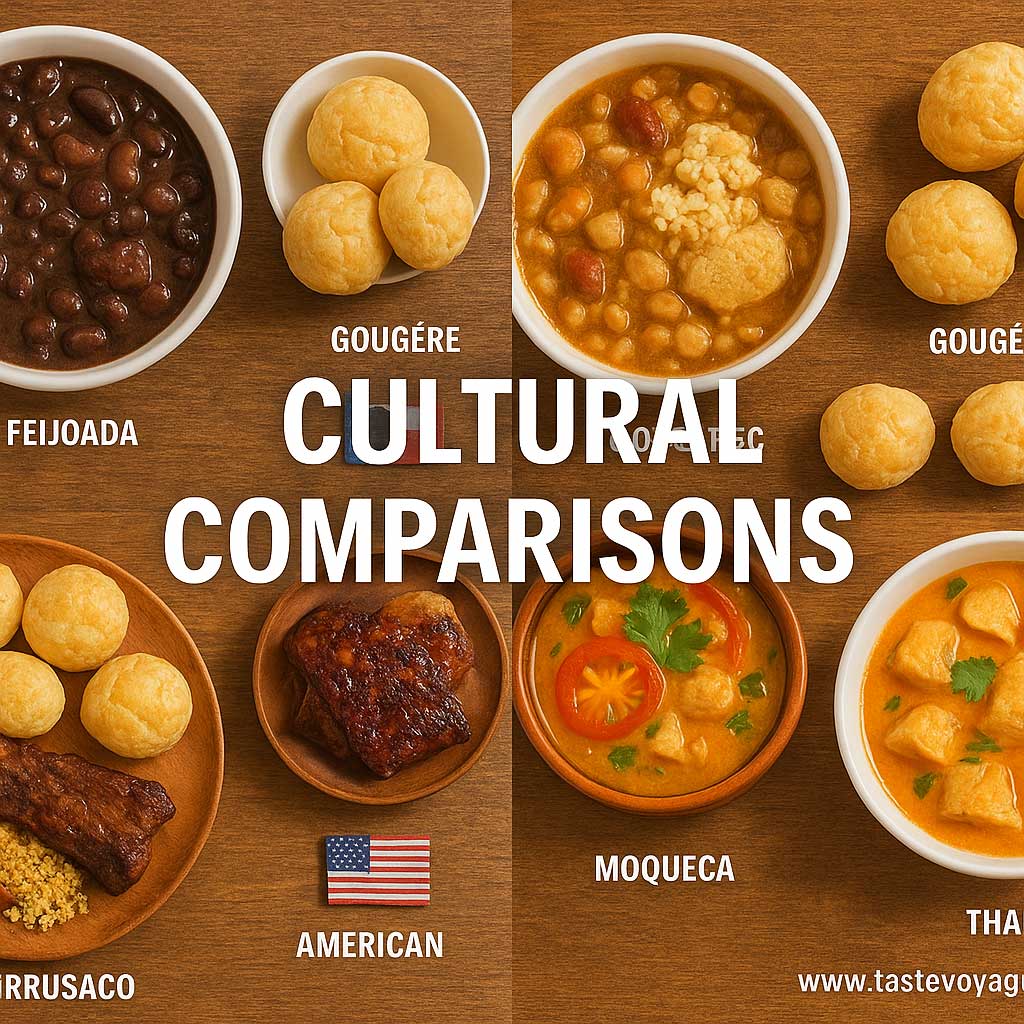Brazilian vs Colombian Food: A Tasty Cultural Showdown
Travel the World Through Food >> Brazilian Cuisine>>Cultural Comparisons>> Brazilian vs Colombian Food: A Tasty Cultural Showdown
Brazilian vs Colombian Food: A Tasty Cultural Showdown
Exploring the Culinary Marvels of Brazilian and Colombian Food
Food is a vibrant reflection of a country’s culture, history, and traditions. When it comes to South America, Brazil and Colombia stand out for their diverse and flavorful cuisines. Although they share the continent, their culinary identities are uniquely captivating. In this post, we’ll explore the rich cultural significance and culinary delights of Brazilian and Colombian dishes, highlighting what makes each so special.
The Heart of Brazilian Cuisine
Brazilian food embodies a lively blend of indigenous ingredients, European influences, and African flavors. It’s a celebration of diversity, with dishes that are hearty, colorful, and full of history. Staples like rice, beans, cassava, and fresh tropical fruits form the foundation of many meals. The famous feijoada, a savory black bean stew with pork, is a dish that symbolizes communal dining and tradition.
Brazilian Cuisine also includes regional specialties that showcase local ingredients. For example, in the Amazon, fish and tropical fruits dominate, while the southern regions favor barbecued meats and hearty stews. The use of spices, herbs, and fresh produce highlights the country’s rich natural resources. Beyond flavors, Brazilian dishes often serve as social glue, bringing family and friends together to enjoy a shared meal.
Colombian Cuisine: A Tapestry of Flavors
Colombian food is equally diverse, shaped by its varied geography and climate. From the Andean highlands to the Caribbean coast, each region offers distinct flavors and culinary traditions. Arepas, cornmeal cakes often topped or stuffed with Cheese, meats, or eggs, are a fundamental part of daily life. These versatile dishes symbolize the importance of maize in Colombian culture.
In coastal regions, seafood plays a significant role, with dishes like ceviche and arroz con coco highlighting the bounty of the sea. Meanwhile, the interior is known for hearty stews and soups, such as ajiaco—a comforting Chicken and potato soup flavored with local herbs. Colombian cuisine emphasizes fresh ingredients and balanced flavors, often complemented by tropical fruits and local herbs.
Cultural Significance and Social Connection
Both Brazilian and Colombian cuisines are deeply rooted in community and tradition. Food acts as a bridge connecting generations, a way to celebrate festivities, and a means of showcasing local pride. In Brazil, dishes like brigadeiro and pão de queijo are not just treats but symbols of joy and hospitality. Similarly, Colombian arepas and bandeja paisa represent regional identities and cultural history.
These culinary traditions are more than just sustenance; they are expressions of cultural identity and pride. Sharing a meal in either country fosters connection, respect, and appreciation for the rich heritage embedded within each dish.
Celebrating Diversity Through Food
Brazilian and Colombian foods exemplify the beauty of culinary diversity. They highlight how local ingredients and techniques come together to create dishes that are both delicious and meaningful. Whether it’s the vibrant flavors of Brazil’s tropical fruits and meats or Colombia’s hearty stews and corn-based dishes, each cuisine offers a window into the people’s way of life.
By exploring these flavors, we gain a deeper understanding and appreciation for the richness of South American culinary traditions. These dishes are more than just food—they are stories, celebrations, and symbols of cultural pride.
Conclusion
Brazilian and Colombian cuisines offer a rich tapestry of flavors that reflect their vibrant cultures. Both cuisines emphasize community, tradition, and the natural bounty of their lands. They invite us to experience their unique culinary identities and appreciate the significance food holds in fostering social bonds and cultural pride. Whether you’re a foodie or simply curious about new tastes, exploring these cuisines promises a delightful journey into the heart of South America’s culinary heritage.
